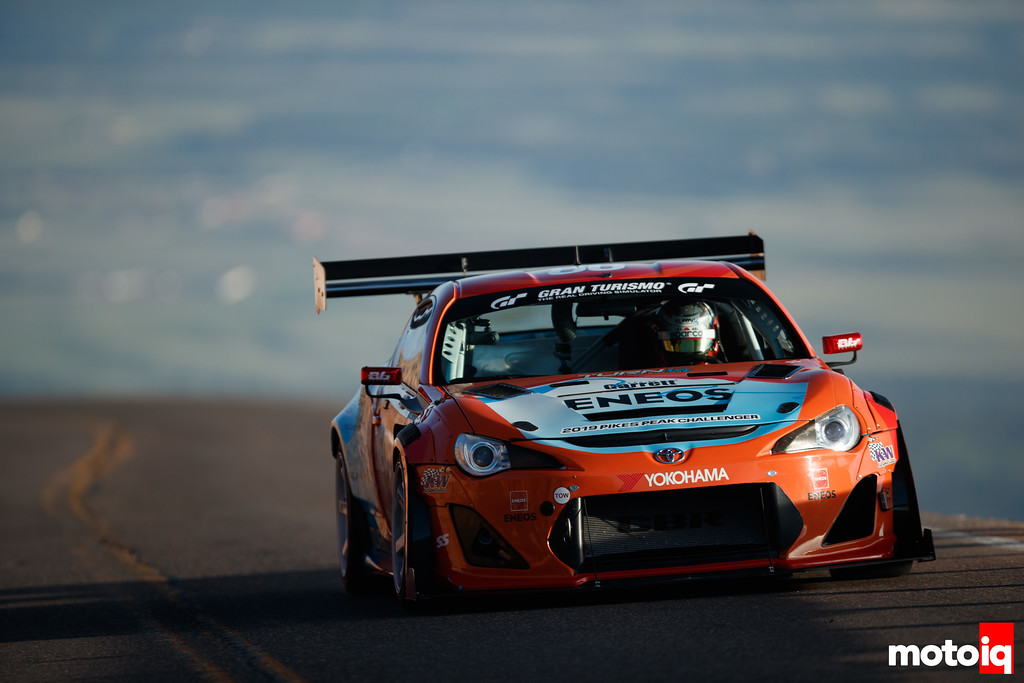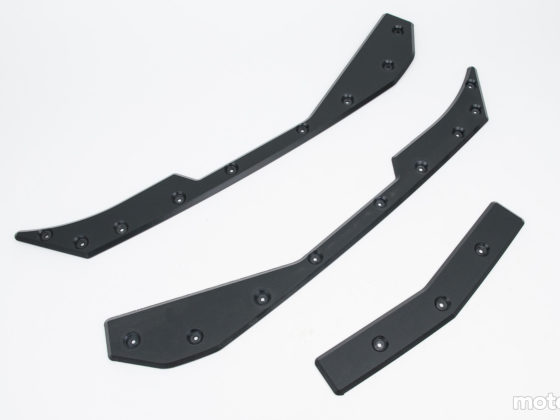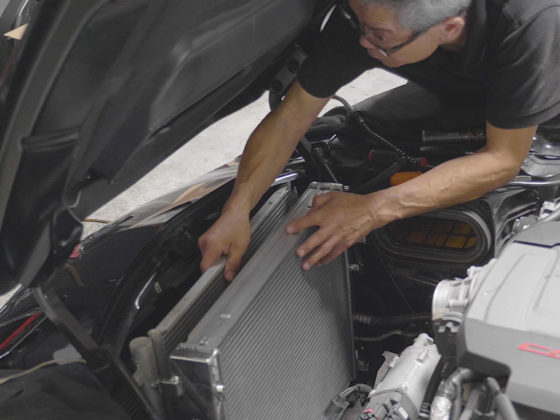
When landing and after picking up our rental support vehicles which included a diesel F350 truck, a big passenger van, and an SUV, our first stop was Pikes Peak International raceway where the car was stashed after having been driven up the previous week for testing. Dai and Kelvin had been at the mountain during the previous week and Dai had gotten a run up the lower part of the course. Snow prevented much testing but Kelvin got to dial in the cars boost control at high altitude and refine the cars traction control programming to the course and Dai’s liking. Fortunately, we had dialed in the car so well in testing that the car ran great and Dai actually liked how it handled.

After making sure the car was still in inside, we hooked the trailer up to our rental truck and away we went. If you want to read all the tech details about the car click on this!

Next was a stop to the store to get provisions for the team. A race team travels on its stomach I guess.

As you can see, we stocked up on some pretty healthy staples….




7 comments
Really cool article Mike, it made me think of a few questions though.
Does the aero noticeably get weaker as the car climbs? if so, would having driver/automatic tuneable suspension make a difference?
The car seem to have small endplates, are those rules limited as well? I would think gigantic endplates would be the default for a course like Pikes Peak.
About the turbo, does it spool up quicker and reach higher RPM in thinner air? So you would get better response but less overall power the higher you go? Unless it’s not limited by the friction on the compressor wheel…
Anyways TIL about racing with oxygen bottles on Pikes Peak.
The aero gets weaker as the car climbs higher, also the turns get tighter and for the most part lower speed. Having driver-adjustable suspension is not that useful because the driver is pretty busy on this course because very little of it is straight and if your chassis guy knows what he is doing the car is balanced high and low-speed aero load or not. A big endplate doesn’t mean much. It gives more room for sponsor logos. The end plates main job is to prevent spillover on the ends of the wing elements or front diffuser for that matter. The ones on our front diffuser also serve as vortex generators so they can only be around a certain size. That is what the weird looking shape is for. At high altitudes, compressor Overspeed and surge are for sure a thing and sometimes you have to reduce boost as the car climbs. Watching that situation is something that is a headache that kicks a lot of people’s ass.
Oh, I thought endplates had a big effect on yaw control, like the shark fins on WEC cars, but if they have a big effect on the budget aren’t they even more useful!? hahaha.
Good to know about boost control at altitude, I just realized that pikes peak is even higher than the Andros Trophy in the french alps. The mexico GP is only half that and they have trouble.
The shark fins don’t do anything in CFD and wind tunnel, at least when they were first tested. They did give more advertising space.
Mike! Do you have any kind of fan setup behind the radiator? Or do you get enough air flow from how fast the car is going up the track?
Yes a pretty large fan, I think its a Spal.
Great article, I love the prep perspective to go with the technical articles.
It seems like you were prepping at Pikes Peak for about a week?